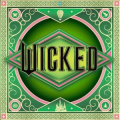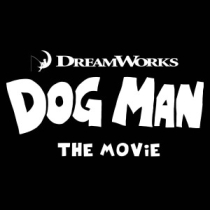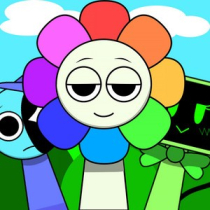Wicked
Wicked review
I recently had the chance to revisit a movie that had previously intrigued me from its reputation for subversive twists and powerful storytelling. The Wicked movie proved to be an experience that both challenged my expectations and reshaped my understanding of narrative potential. As I sat in the darkened theater, I was immediately enveloped by an atmosphere that juxtaposed haunting aesthetics with a deeply personal narrative. Every minute of the film resonated with an artistic ambition that compelled me to further reflect on its intricacies. What began as a mere curiosity evolved into a deeply immersive journey, filled with stylistic choices that demanded attention and reflection. In this personal account, I will walk you through my multifaceted experience with the film, detailing my encounters with its various elements.
The visual aesthetics of the Wicked movie left me in awe from the onset. The cinematography was striking, featuring sweeping landscapes and impeccably designed sets that conveyed an almost tangible essence of the film's world. Each frame was carefully composed to evoke a sense of mystique and emotion. I spent much of the screening marveling at how the visuals could simultaneously declare a grandeur that felt both epic and intimately personal. Colors were used as narrative tools—each hue meticulously chosen to represent different moods within the storyline. Shadows and lighting were paired in such a deliberate way that they underscored the inner conflicts of characters, inviting me to look deeper into the interplay between light and darkness. The visuals were not mere background elements; they actively contributed to the storytelling, creating a symbiosis between image and narrative that I found deeply engaging.
The Power of an Unconventional Narrative Structure
What struck me most about this film was the boldness with which it abandoned linear storytelling. The director adopted a non-linear narrative that demanded my full engagement. Shifts between time periods were deftly managed to reveal not only character backstories but also thematic layers that underpinned the narrative framework. I admired how the film moved fluidly between moments of introspection and bursts of dramatic tension, each scene offering new insights. Because of this unconventional structure, I was constantly theorizing about the connections between early clues and later revelations. This approach transformed the viewing experience into an interactive process, as if I were piecing together a sophisticated mosaic of narrative elements. It was a thrilling exercise that kept me on my toes, ensuring that my attention remained unwavering until the final scene.
The Emotional Gravity of the Performances
The performance of the cast was undeniably one of the pillars that elevated the Wicked movie to an extraordinary level. I was particularly impressed by the lead actor, whose nuanced portrayal of a conflicted character resonated deeply with me. This individual managed to convey a wide spectrum of emotions—from quiet desperation to moments of fierce determination—without ever straying into melodrama. The supporting cast complemented this impeccable performance with their own rich interpretations, adding layers of complexity to relationships and character interactions. I found that each actor embodied their roles convincingly, drawing me into their internal struggles and triumphs. The authenticity of these performances made the film's darker themes more accessible while simultaneously challenging my preconceptions about conventional heroism and valor in cinema.
The Boldness of the Direction
The director of the Wicked movie left an unmistakable signature on the film with a style that felt both deliberate and innovative. Their willingness to experiment with unconventional techniques spoke volumes about a commitment to artistic authenticity. I appreciated how the director explored the interplay between narrative and symbolic imagery, often using subtle gestures or fleeting visuals to echo the film's underlying messages. Through carefully orchestrated camera angles and a deliberate pacing, the director invited me to question every scene, to seek meaning beyond what was immediately visible. The directorial choices were not without risk; each innovative move felt like a daring gamble that ultimately paid off by conferring upon the film a distinct identity. It was refreshing to see a director who challenged conventional cinematic norms and created a work that felt both timeless and ahead of its time.
The Intrigue of the Musical Score
A film of this complexity is often elevated by a powerful musical score, and the Wicked movie was no exception. The soundtrack perfectly mirrored the emotional landscape of the film, acting as an aural extension of the narrative. I found the score to be both haunting and invigorating, with each musical note carefully timed to accentuate the highs and lows of the storyline. The music served as a guide through the labyrinth of emotions, ushering me into scenes with a wave of melancholy or the crescendo of a momentous climax. It was a masterclass in how sound and music can reinforce tone and meaning, further deepening my emotional connection with the movie. Even long after the screening concluded, the melodies lingered in my mind, serving as a reminder of the film's lasting impact.
The Nuances of Editing and Pacing
The editing in the Wicked movie demonstrated a fine balance between coherence and artistic freedom. The transitions between scenes were executed with such precision that each cut seemed to breathe life into the overarching narrative. I noticed that the rhythm of editing was integral to the film’s effectiveness, enabling the storyline to flow seamlessly despite its complex structure. There were moments of brisk pacing where tension built up rapidly, followed by slower sequences that encouraged deep contemplation. This dynamic modulation of tempo kept me engaged and ensured that the narrative retained a strong sense of momentum. The editing choices reflected an understanding that in a film of such layered depth, every pause, every transition is a deliberate contribution to the emotional cadence of the work.
A Deep Dive into Thematic Elements
The myriad themes woven throughout the film provided a rich tapestry for interpretation. I found the exploration of good versus moral ambiguity particularly absorbing. The Wicked movie did a commendable job of blurring the conventional lines that separate protagonists from antagonists. This nuanced approach spurred me to reflect on my own convictions regarding morality and the complexity inherent in human behavior. Themes of destiny, rebellion, and redemption appeared with a subtle insistence that invited multiple interpretations. I was drawn to the idea that every character, regardless of their apparent role in the narrative, carried their own internal moral struggles that resonated on a fundamental level. The depth of these themes contributed to an overall hypnotic quality that elevated the movie from a mere visual treat to a challenging philosophical experience.
The Impact of Set and Production Design
One of the most striking aspects of the movie was its production design. I was continually impressed by the elaborate sets that transported me to a realm seemingly carved out of both fantasy and stark reality. The attention to detail in the costumes, decor, and spatial arrangements fostered an immersive environment that felt as tangible as it was imaginative. Every location, from the dimly lit corridors of ancient structures to the sprawling vistas of untamed landscapes, was meticulously constructed to reflect the inner world of the characters and the broader themes of the narrative. This level of thoughtful production design not only enhanced the aesthetic appeal of the film but also underscored its narrative intentions, inviting viewers like myself to lose ourselves in the meticulously crafted world on screen.
The Layers of Character Development
Character development in the Wicked movie was approached with an unflinching honesty that resonated deeply with me. The film’s characters were crafted with a keen sensitivity to the intricacies of human nature. I appreciated how even the most minor figures were allowed moments that hinted at their hidden depths, making the overall narrative a mosaic of interlocking personal journeys. Each character underwent a transformative arc, evolving through experiences that revealed vulnerabilities, aspirations, and internal conflicts. Their development was underscored by subtle interactions and crises that unfolded organically over time. This careful attention to character allowed me to empathize with the struggles and triumphs of each individual, resulting in a more profound, personalized viewing experience that transcended the simple confines of a traditional narrative.
The Role of Symbolism and Hidden References
Throughout the Wicked movie, symbolism was carefully interlaced with the narrative, providing a rich substrate for interpretation. I found every visual motif to carry a symbolic weight that helped to amplify the film's central themes. Whether it was the recurring imagery of a shattered mirror or the frequent references to nature reborn, these symbols seemed to serve as a bridge between the overt narrative and the latent currents of meaning. The director’s deliberate use of such devices challenged me to think beyond the surface, igniting an internal dialogue as I pieced together the symbolic references scattered throughout the film. It was as if each symbol was a clue in an elaborate mystery, directing me to consider the deeper philosophical reflections embedded within the story. This fusion of overt narrative with hidden symbolism elevated the movie into an art form that honored the viewers' need for intellectual and emotional engagement.
The Harmonious Blend of Genre Influences
The Wicked movie was particularly captivating in how it managed to blend different genre influences without losing its distinct identity. I appreciated the film's seamless combination of elements derived from classic fantasy, psychological drama, and even hints of dark satire. This hybrid approach was executed with such finesse that it offered a refreshing departure from the predictable trajectory of mainstream cinema. Each reference to genre conventions felt both a tribute to tradition and a challenge to the viewer's preconceptions. As a fan of diverse storytelling, I relished the film’s ability to surprise me at every turn. It combined familiar motifs with innovative narrative devices that, together, crafted an experience both intellectually stimulating and emotionally resonant. This artful melding of genres underscored the film's commitment to pushing boundaries and rewarding viewers who were open to a dynamic, multifaceted narrative.
The Unconventional Approach to Narrative Conflicts
The conflicts presented in the Wicked movie were not limited to external struggles but delved deeply into the internal battles of its characters. I was particularly moved by the way the film presented personal dilemmas that questioned the nature of power, legacy, and self-discovery. Unlike many conventions that opt for overt clashes, this movie embraced subtler, more intricate confrontations that unfolded with precision. The internal conflicts were portrayed with a respectful sensitivity that allowed me to empathize with the crumbling facades of characters facing existential crises. These moments, often quiet yet heavy with meaning, resonated with me on an intimate level as I considered my own internal contradictions and the broader societal narratives that influence our identities. Every scene bristling with emotional tension served as a reminder of how even the most nuanced personal conflicts can bear universal truths.
The Transformative Effect on My Perception of Cinema
Watching the Wicked movie was not merely a passive activity; it was an experience that transformed the way I perceive film as an art form. Prior to this viewing, I had often regarded movies primarily as a form of escapism. However, as I immersed myself in the layered narrative and innovative style of this film, I began to recognize the vast potential of cinema to serve as a medium for profound personal insight and social commentary. The interplay between sound, visuals, narrative, and performance opened my eyes to the possibility of truly immersive storytelling. I appreciated how each element intertwined seamlessly to offer a viewing experience that was both aesthetically pleasing and intellectually provocative. This movie challenged me to reconsider my own relationship with film, nurturing a newfound appreciation for projects that dare to explore uncharted territories in narrative and form. The transformative power of the film lingered with me, prompting long after the screening to reflect on the role of art in shaping our understanding of the world.
Cons:
- The non-linear narrative can be confusing for viewers who prefer a straightforward storyline
- Some scenes have uneven pacing that may disrupt the overall flow of the film
- Complex symbolism may require multiple viewings to fully grasp every underlying theme
Pros:
- Innovative narrative structure that keeps the audience engaged and provokes thoughtful analysis
- Stunning visual and production design that creates an immersive and atmospheric experience
- Powerful musical score that enhances the emotional tone of key scenes
- Deep character development that adds nuance and complexity to the storyline
- Bold direction that challenges conventional storytelling and offers fresh perspectives
- Seamless blending of genre influences that keeps the film unpredictable and intriguing















